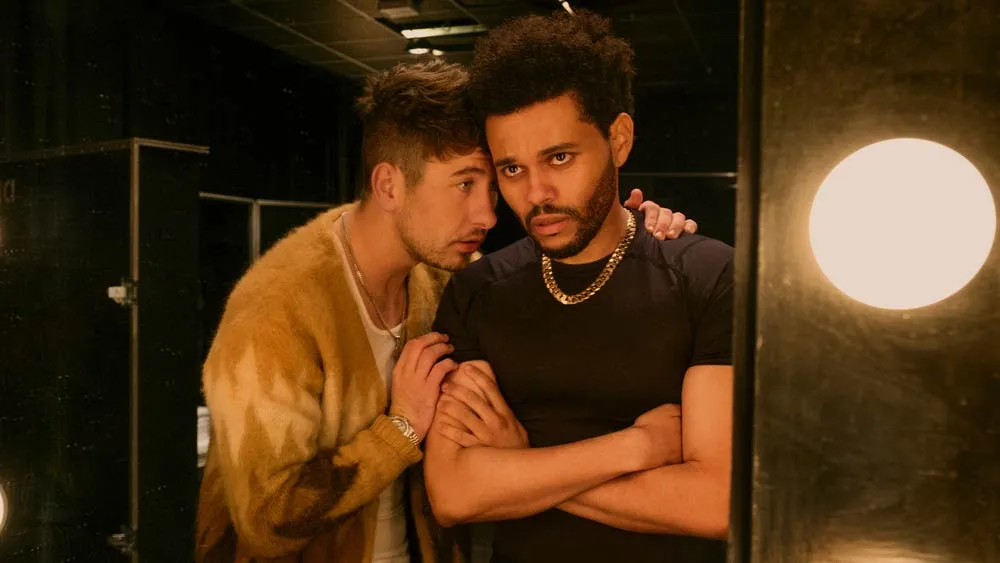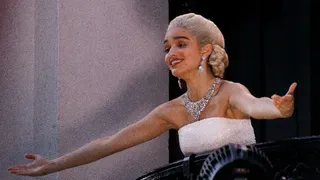March 27, 2019
Dumbo
READ TIME: 4 MIN.
Dumbo, sorry to say, is a one-trick pony. That trick – that he can fly – is quite a spectacular realized in Tim Burton's reimagining of the classic Disney cartoon. When he flaps his ears (which hang awkwardly off his small head) and takes flight, the sound is like the roar of a jet plane; and at times, he moves with the speed of one. Those sequences, when he soars around a number of big tops to Danny Elfman's soaring music, have a wonder that makes apparent the reason why this live-action version was green-lit in the first place. It is the first released of four Disney remakes of animated classics; two of them ("Aladdin" and "The Lion King") are musicals. In some ways, "Dumbo" should be a musical – perhaps songs could make this earthbound fantasy fly.
Burton and his screenwriter Ehren Kruger only use the original cartoon as a touchstone, developing a story that focuses on the humans in the little elephant's life who work at the circus into which he is born. The time is 1918 – a dark period in history that's reflected in the return of Holt Farrier (Colin Farrell) from the First World War minus an arm to his two children, Milly (Nicole N. Parker) and Joe (Finley Hobbins). His wife, with whom he shared a circus act with horses, has died from the influenza epidemic that killed millions at the time. Making matters worse, the circus' owner, Medici (Danny DeVito) has sold his horses and bought a pregnant elephant, whose soon-to-be-born child will save the sagging circus.
Dumbo, then, with his floppy ears and a sweet, little smile, is a disaster for Medici. But Millie and Joe (something of human stand-ins for the cartoon's Timothy Q. Mouse) discover Dumbo can fly with the help of a feather dangled in front of his trunk. Before he does, though, his mother kills a vicious roustabout and is quarantined, then sent away. "Dumbo" emotional hook has long been his separation from his mother, but it feels less so here. What's most curious about the film is that for one with such an emotional story, how emotionally remote it is. In humanizing the story, the heart appears to be taken out of it.
Dumbo, of course, flies and becomes a media sensation, largely due to an entrepreneur – the aristocratic V.A. Vandevere (Michael Keaton) – who whisk Dumbo and the Medici circus away to Dreamland, a mammoth amusement park on Coney Island to be its prime attraction. (Though it only lasted for seven years, the real Dreamland was considered Coney Island's prime amusement attraction until it burnt down dramatically in 1911.) It is here where production designer Rick Heinrichs gets to shine, creating a spectacular vision of an amusement park with its sleek Art Deco-styled attractions presided over by a giant tent in which Dumbo will perform, all of which is photographed with burnished glory by cinematographer Ben Davis. Together, they make this film visually soar.
It is brave of Burton to make a Disney film in which the villain is something of a stand-in for the real Disney, famous for building an amusement park with his name and a circus in the form of a movie studio; but for most people in the audience, Disney is more a brand than a person, so in all likelihood that connection is less apparent or relevant. Regardless, Keaton appears to have walked out of a silent movie from the period and throws off what little nuance the film has with his overblown performance.
To get Dumbo, by now a media sensation, to fly takes the help of Colette Marchant (Eva Green), Vandevere's icy companion who turns out to be a former circus performer whose heart is with Dumbo and the Farriers. Green brings the film to life with her portrayal of the golddigger with a heart of gold and her scenes with Dumbo are the film's most enjoyable. She and DeVito have the most fun with their characters, and Burton has his most fun with these Dreamland sequences with its sleek designs and stage full of showgirls in geometric designs reminiscent of Busby Berkeley.
That the film doesn't offend in the same ways that Burton's "Alice in Wonderland" (his first live-action retooling of a Disney classic) or his lame adaptation of "Dark Shadows," is, I guess, progress. And the film has a gorgeous look, recreating the world of a hundred years ago with meticulous care and imagination. Too bad that the characters are, for the most part, two-dimensional, most notably Farrell. Having lost his arm, his wife and his livelihood, you can understand why he's mopes through most of the film; but he isn't much of a hero and his performance is notably passive. Even the spark of romance with Green is oddly muted.
And the story, which concerns getting Dumbo back to his endangered mother, unfolds with clumsy cross-cutting and predictable action involving a creepy Teutonic villain (Vandevere's security chief) and DeVito's spunky troupe who engineer an escape for Dumbo and his mom. In a nod to our times, Dumbo and his mom don't become stars of the circus as they do in the original cartoon, instead return to their natural habitat where Dumbo is seen at his most jubilant speeding through waterfalls amongst the wails of other elephants. It is a happy ending to a movie that feels more cynically calculated to bring an iconic Disney character into the 21st century. But if it is a success, expect poachers to visit Dumbo's habitat and steal him away for a sequel.






